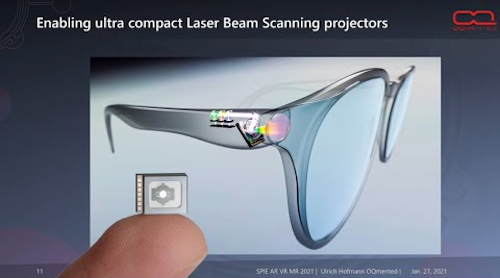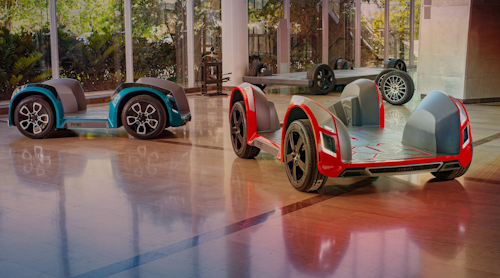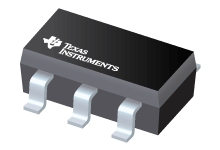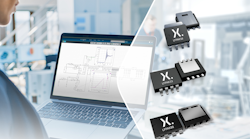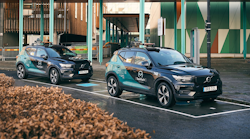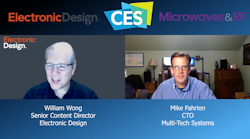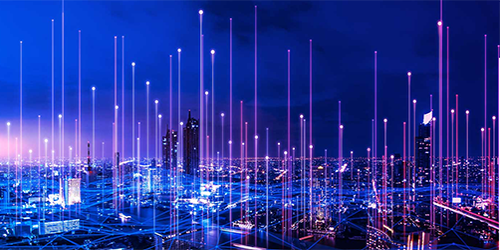This article is part of the2022 Electronic Design Forecastissue
What you'll learn:
- Use of piezo-based sensors that save power thanks to harvesting capabilities.
- 视网膜投影肌氨酸g a new AR experience.
- Dealing with EMC.
Diverse technologies are coalescing to create numerous day-to-day solutions that make life more convenient, accessible, and pleasant. These solutions provide critical functionality in connectivity, IoT systems, healthcare, robotics, energy, user experience, and mobility, well beyond the component level.
But without certain electronic components, many solutions we take for granted these days might never have come about. This article outlines two technological solutions that are set to revolutionize the industry and our lives in 2022.
Piezo-Powered Sensor Platform
Most modern cars come equipped with a tire-pressure monitoring system that displays four simple two-digit numbers on the dashboard. These pressure sensors run on a tiny coin-cell battery with a lifetime of anywhere from eight to 10 years—nobody thinks much of it.
Instead of just transmitting the tire’s pressure from the wheel, we could get data from other sensors for the smart, connected wheel of the future. For example, information about a low tire tread could advise the driver to change the tire before a blowout occurs.
While this data is fundamental for driver comfort and safety, it creates new revenue streams, such as recurring tire sales. The tire maker could leverage the data to send a text message, email, or notification, advising the owner to visit the shop for a change with the same tire brand.
More sensors in the wheel will consume more power and gaining access to this data requires better communication. The two-digit number I mentioned in the existing tire-pressure monitoring systems doesn’t support high data rates. If you put Bluetooth in there, for example, the original coin-cell battery will probably last for between six and 12 months. And let’s face it, nobody wants to take their car to the shop to change the battery every six months.
Interestingly, piezoelectric materials can harvest energy from vibration and movement. A piezo-powered sensor inside the wheel can harvest energy as the car is being driven and charge that same coin battery, prolonging its lifetime. Besides tire pressure and tread depth, possibilities include tire wall temperature, road surface conditions, and wheel alignment.
For example, theTDKpiezo-powered sensor platform, called InWheelSense(Fig. 1), delivers data analytics, obtained at the wheel, directly to the vehicle and/or to cloud-connected vehicle-to-everything (V2X) devices. These analytics support high-performance driving, autonomous vehicles, safety, comfort, and energy savings. In addition, this technological solution benefits the driver, the car maker, the tire maker, and overall customer relations.
From a societal point of view, this data also provides a new way of crowdsourcing road health data, for example, relating to potholes. By mapping out this real-time information, local municipalities know which roads to fix. This proactive approach to road maintenance also eliminates the need for the public to send emails or make calls to the local municipality, saving valuable resources.
Augmented Reality with Retinal Projection
The lack of long-term usability is a big problem in the augmented-reality (AR) space. The usability issue depends heavily on two factors: weight and form factor. Bulky and heavy AR glasses may only be worn 15-20 minutes before the nose, ears, or temples start to feel uncomfortable.
Today’s waveguide projection systems require higher-power laser to project the image, which drives the size of the battery required. Alongside other electronics, the battery also can impact the form factor. What’s needed is to overhaul the projection subsystem and other electronics so that the power consumption can deploy a smaller battery while providing all-day use.
Retinal projection technology uses an ultra-low-powered laser to project the image directly onto the eyeball via an optical module built into the glasses’ frame(Fig. 2). The early modules reflect each of the three primary colors of light (RGB) from laser elements onto a lens and mirror, which are then projected as a single beam of light to display the image. Although much smaller than the old headsets, the module requires multiple components that lead to its large size, making the frame of the glasses bulky and heavy.
Merging the RGB lights through a planar lightwave circuit eliminates the need for lenses and mirrors, significantly reducing component count and module size. This technology also consumes up to one-tenth of the power compared to mainstream retinal projection methods.
With such a reduction in power consumption, the battery can be much smaller to do the same function. When the retinal projection module and battery are smaller, the solution becomes lighter and more compact. Thus, AR smart glasses can appear more like a regular pair of glasses, as well as being more comfortable and easier to fit.
Other subsystems also will need to be low power, such as microphones embedded in the glasses. Ultra-low-power ultrasonic and motion sensors can track head movement and change the projected video image accordingly. In addition to developing lower-power components, power consumption can be managed via system applications. For example, instead of constantly projecting video or a full image, AR glasses would just project text or icons for direction.
These tiny modules are expected to be integrated into more and more smart glasses and possibly the next post-smartphone device. Once consumers can wear the glasses for longer periods of time, developers will be more inclined to design other exciting use cases. Aside from smart glasses, future potential applications of this full-color laser module include automotive head-up displays and femto projectors.
EMC Countermeasures
Both InWheelSense and AR smart glasses integrate wireless communications, e.g., Bluetooth or Wi-Fi, introducing other complexities like electromagnetic interference (EMI). Electromagnetic-compatibility (EMC) countermeasures are more critical than ever given the rollout of 5G sub-6-GHz and millimeter wave and future cellular vehicle-to-everything (C-V2X) technologies, particularly road-safety applications and advanced driver-assistance systems (ADAS).
The 5G spectrum can be adversely affected by EMC from smartphones, wearables (smartwatches, AR glasses, etc.), and other electronic devices. Here, careful selection of appropriate filters, capacitors, and snubbers is vital.
What Lies Ahead
This year, piezo-powered solutions may transfer outside the automotive sphere—watch this space. As the trend for individuals to be less tethered to their smartphones progresses, there’s also the possibility of adding 5G connectivity to the AR headset. EMC will continue to be a force to be reckoned with, where robust and reliable connectivity is essential and sometimes even safety critical.
Even though the rollout of 5G is still relatively fresh, the industry is already talking about the next frontier, 6G, which poses new challenges.
Read more articles in the2022 Electronic Design Forecastissue

